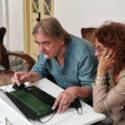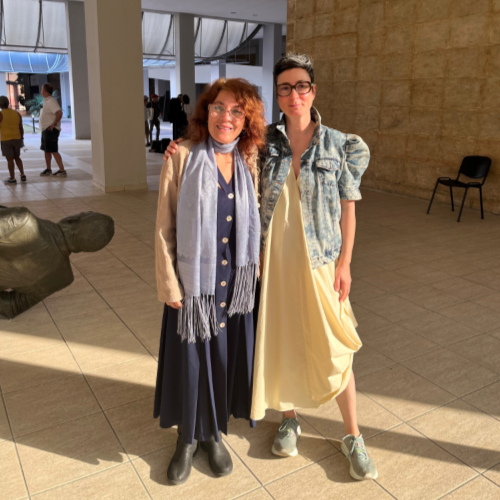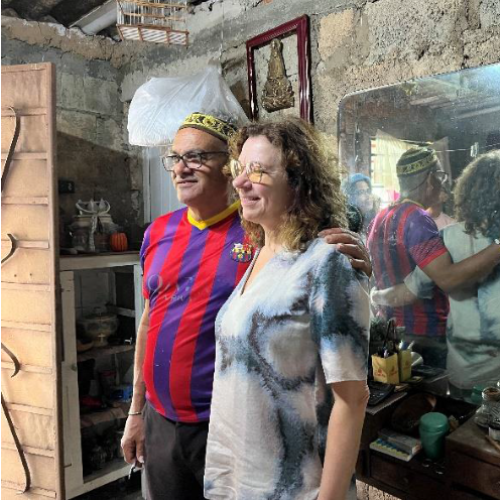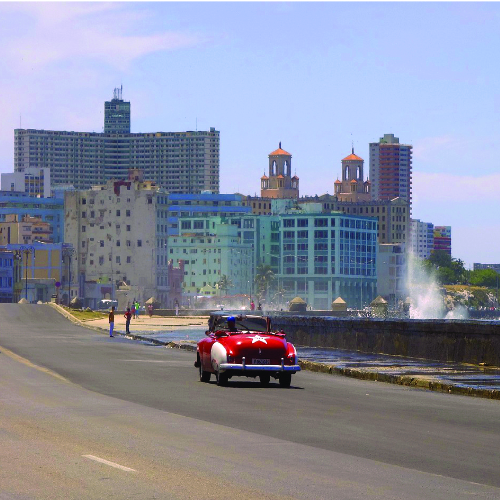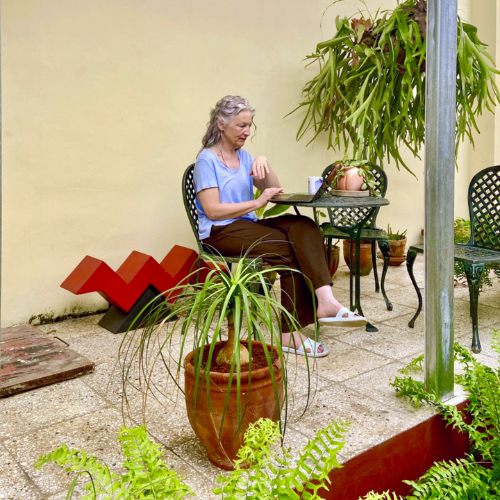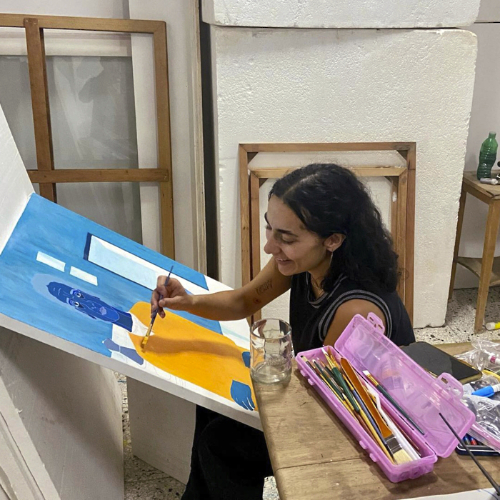Unpack Studio Havana
Artist in Residency
11.01. – 29.02.2024
Zu Beginn möchte ich mich beim Team von Unpack Studio Havana bedanken, das uns eine unvergessliche
und auch in künstlerisch aber auch menschlich – freundschaftlicher Hinsicht
außergewöhnliche Residency ermöglicht hat. Vor allem erwähnen möchte ich Alex, Omar, Mike,
Maria, Danny, Lazaro und all die tollen Künstlerfreunde, die uns fast täglich durch die Kunstszene
Havanas und tolle Events in der Casa Salamandra begleiteten.








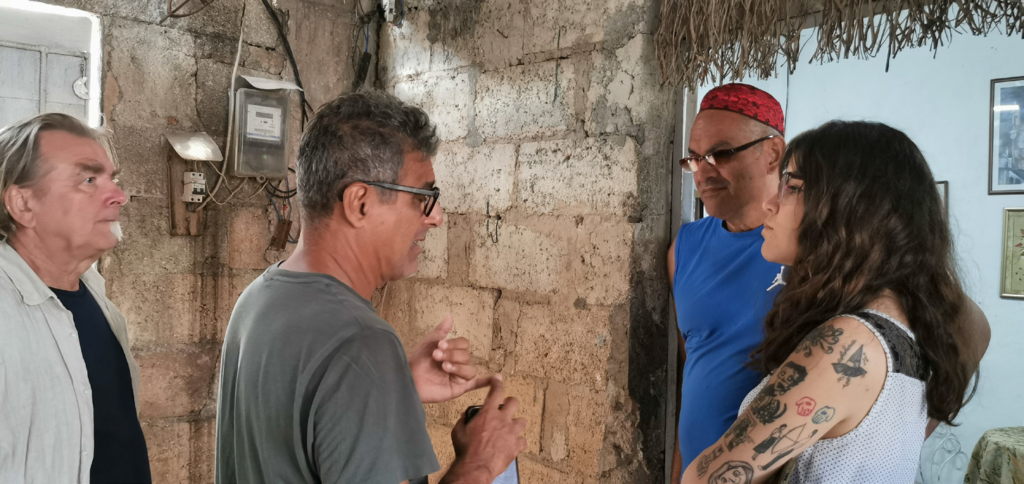

Nach einiger Zeit hatte ich mich an das überbordende Porgramm so gewöhnt, dass mir beinahe
etwas fehlte, wenn einmal ein Tag „frei“ war und ich auf eigene Faust zu fotografischen
Entdeckungsreisen, hauptsächlich zu Fuß aufbrach.
Diese fotografischen Rundgänge waren es auch, die zu einer Fülle von Bildmaterial führten – ca
50 000 Aufnahmen. In 140 Kapitel geordnet. Diese Fotos bilden bis dato – Dezember 2024 – die
Grundlage für unterschiedliche künstlerische Projekte, welche sich immer weiter entwickeln und
mich wahrscheinlich noch einige Zeit beschäftigen.
Einige Beispiele: Fahrt mit dem Almendron, ein Autowrack in einem Hinterhof, Müll auf der
Strasse, Ruine einer Purofabrik, Plattenbauten, Architekturdetails.
Nächste Seite: Dokumentation eines Spaziergangs in Vedado














Hier noch einige Bespiele von Werkgruppen, die ich mit Hilfe des Materials, welches ich in Havana
gesammelt habe, entwickelt habe:
Filmskizze VEDADO:
Herzlichen Dank an Omar Estrada, der mir in einem ausführlichen Interview, seine Sicht der
Situation der Kunst in Cuba dargelegt hat. Besonders spannend waren auch seine Ausführungen
zum Konzept von UNPACK STUDIO Havanna, als unabhängiger Kunstraum.
Ich möchte mich auch bei Ana Monier für ihre Violinimprovisation und Maria Santana für das Duett
mit Omar bedanken.

Das Storyboard für das geplante Video VEDADO, 2k, 15min,
besteht aus Sequenzen, wo „dokumentatorische“ Aufnahmen, unterlegt mit dem Interview mit
Omar Estrada, und abstrakten Animationen abwechseln. Diese Animationen sind eine
Kombination von Fotografie, Zeichnung und musikalischer Improvisation. Sie öffnen freie
poetische Räume.


Collagen Caspar, Eugene und Rene in Havana – Imagine
Das Projekt umfasst 4 Arbeiten, die von meiner Residency in Havana im Jänner / Feb 2024
inspiriert sind.
Es sind 4 Collagen, die auf Fotos von ruinösen Gebäuden rund um den John
Lennon Park in Havana basieren.
Ausgehend von diesen Bildern erstellte ich Montagen, deren Elemente keine Fotografien realer
Gebäude sind, vielmehr sind es Bildsplitter von spontan entstandenen Strukturen mittels Tusche
und Kleister auf Papier.
Die so entstandenen künstlichen Ruinen werden der sozialen Realität entzogen und zu
Projektionsflächen der Phantasie: von Träumen einer vergangenen und zukünftigen Welt.




Ähnlich wie auf Caspar David Friedrichs, oder des Französischen Romantikers Delacriox Bildern
(„der Träumer“, oder „Ruine Oybin“, „Der Tod des Sardanapal“) bergen die Architekturen auf
Caspar in Havana 1 und 2 bzw Eugene in Havana
die Möglichkeit, dass Vergangenes in der Gegenwart zu Geheimnissen wird, die Gedanken
anregen und die übergebliebenen Ruinen als Freiräume zur Konzeption neuer Strategien und
Weltvorstellungen genutzt werden.
Im Surrealismus nutzte man das Unterbewusstsein, um kreatives / unkonventionelles /
unabhängiges Denken hervorzubringen. Das rätselhafte Gebilde im Vordergrund und die fragile,
Räumlichkeit der Gebäude rückt die Collage
Rene in Havana
in die Nähe der Bilder „Geistiger Blick“ und „Die Brust“ von Rene Magritte und zu mysteriösen
Konstruktionen von Georgio de Chirico.
Oftmals bietenTräume die einzige Möglichkeit eines Auswegs aus einer bedrückend empfundenen
Realität. Durch die Autonomie des Traums können Gedanken entstehen, die schlussendlich
tatsächliche Veränderungen ermöglichen.
Anbei noch einige Ausschnitte aus meinem „kubanischen Tagebuch“, die sich mit „John Lennon in
Havana“ beschäftigen. Zu Beginn des Aufenthaltes hielt ich es für möglich das Projekt auf einem
täglichen Zwiegespräch mit John Lennon aufzubauen, das hat sich aber schließlich äußerer
Umstände halber als nicht zielführend erwiesen.


Dear John: I`m gonna write you a letter…..
Auf alle Fälle hat mich Dein Sängerknabenblick im offiziellen Imagine – Video nicht beeindruckt.
Und auch das Busserl mit der auf Stummfilmdiva hergerichteten Yoko kommt nicht an den Blick
der Statue in Havana heran: „So eine traurige Autorität!“ Zwar ist die Ähnlichkeit auf die Brille
beschränkt, aber trotzdem wollte ich mich täglich zu Dir aufs Bankerl setzten… Aber wegen der
Tourist:innen und dem zahnlosen Brillenwächter wird das nichts werden und ich muss mir ohne
deine Hilfe was einfallen lassen.
Collagen: Los senos de ayer son los secretos de la magnana
Das Projekt umfasst derzeit Arbeiten, die von meiner Residency in Havana im Jänner / Feb 2024
inspiriert sind.
Es sind Collagen, die auf Fotos von Gebäuden, Autowracks, weggeworfenen Papier,
Plattenbauten… in Havana basieren.
Die Collagen sind am Computer virtuell vorgefertigt, dann allerdings von Hand geklebt, in einem
provisorischen Prozess materialisiert. Aus den dokumentatorischen Fotografien werden freie
Zeichen, absurde Gebilde, die ihr Dasein als Abfall und Ruine auf einer poetischen Ebene neu
erfinden und so positiv aufladen.






Nochmals ein herzliches SERVUS aus dem herbstlichen Österreich und alles Gute, viel Spass
und Erfolg. Thomas Steiner, Dezember 2024.
